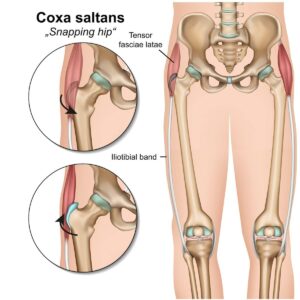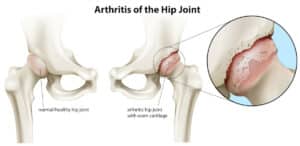Free download: Top 10 Natural & Easy Remedies for Joint Pain from Home. Learn these helpful remedies.
Estimated Reading Time: 12 minutes read
Figuring out how to sit with piriformis syndrome is literally a pain in the butt… It’s usually caused by excessive tightness or pressure over the piriformis muscle, located in the buttock region.
Due to the location of the piriformis muscle, and the fact that the sciatic nerve runs under this muscle, it’s possible to experience discomfort associated with sciatic-like symptoms.
One of the primary issues those with piriformis syndrome will experience is pain when sitting.
Now, obviously, you can’t avoid sitting altogether, but how do you sit with piriformis syndrome?
To help making sitting with piriformis syndrome more comfortable, you can make some positional and lifestyle modifications to help relieve your symptoms while recovering.
Table of Contents
Piriformis Syndrome Symptoms While Sitting
Let’s take a look at the most common symptoms usually associated with piriformis syndrome when in a sitting position:
- An aching buttock pain
- Sciatica (pain that radiates down the back of the thigh, calf and/or foot)
- Pain with increased sitting time due to excess pressure over the piriformis
- Numbness and/or tingling down the back of the leg (from the sciatic nerve)
While sitting is one of the most challenging positions to remain in when dealing with piriformis syndrome, it’s also important to note that you may additionally experience piriformis pain with increased walking, running or using stairs.
Piriformis Syndrome Versus Sciatica: How to Differentiate
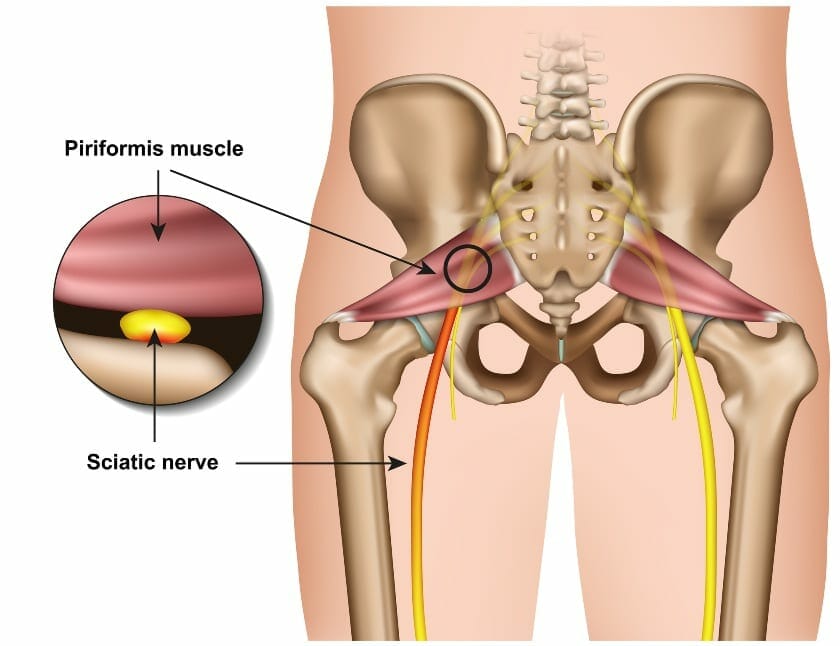
Due to the sciatic nerve running under the piriformis muscle, and often times with piriformis syndrome sciatica symptoms will occur, many will confuse piriformis syndrome with sciatica. Both of these issues can occur while in a sitting position.
It’s important to note that there is a difference between the two. Sciatica is usually a symptom of a problem, whereas piriformis syndrome is an actual diagnosis.
Piriformis syndrome can lead to sciatica if it begins to compress on the nerve.
While sciatica more commonly stems from nerve compression in the lumbar spine, it is a common symptom of piriformis syndrome pain.
For this reason, if you develop what you believe to be sciatica, it’s important to differentially diagnose the actual cause of this symptoms.
Is it coming from the spine or the piriformis muscle?
This is a question that would need further medical assessment to determine.
Causes of Piriformis Syndrome

As previously mentioned, piriformis syndrome is normally caused by prolonged tightness in the piriformis muscle.
If there is already tightness in the muscle, then you’re adding further pressure and tightness to the piriformis when sitting on it for an extended period.
There may also be associated inflammation and spasming in the muscle.
What exactly causes this tightness?
The following are common causes behind tight piriformis muscles, which will limit sitting tolerance:
- Prolonged sitting, such as with an office job
- Poor posture, such as sitting in a chair with poor back support
- Muscle imbalances
- Previous injury
- Repetitive motions, such as walking, bicycling, climbing stairs, or running
- Abnormal pressure on the piriformis muscle, such as keeping your wallet in your back pocket and sitting on it (fat wallet syndrome)
Confirming a Diagnosis of Piriformis Syndrome
If you’re continuing to have pain while sitting due to piriformis syndrome, make sure to seek a healthcare consult.
Your medical doctor and/or physical therapist will typically be able to diagnose piriformis syndrome based on your described symptoms and a physical exam.
Physical Examination
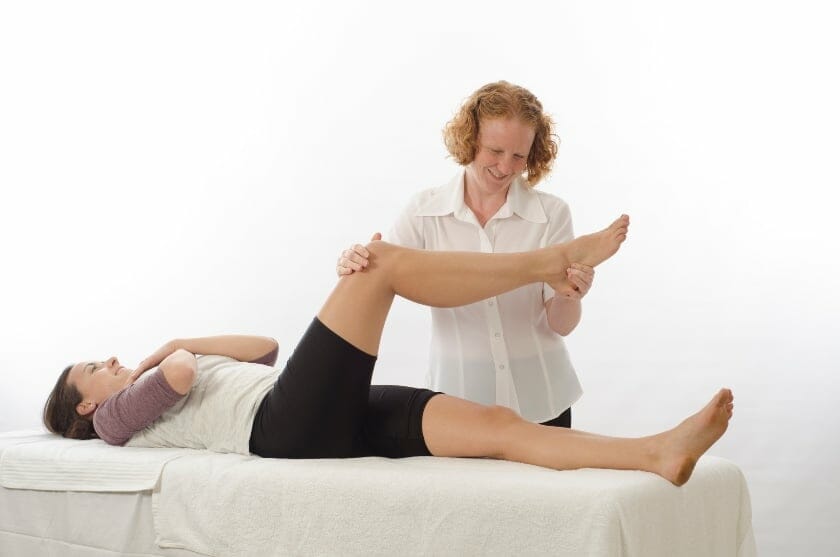
During the physical examination, the painful area will be palpated, or assessed manually, to attempt to reproduce the pain.
Tenderness to palpation directly over the piriformis muscle is common with piriformis syndrome, and may re-create sciatica symptoms.
Typically if the sciatic nerve impingement is coming from the spine, then pressure over the piriformis muscle will not necessarily reproduce that shooting pain.
Special Tests

There are a couple of special orthopedic tests that will also help to confirm a diagnosis of piriformis syndrome. The sooner a diagnosis can be confirmed, the sooner you’re on your way to sitting without pain!
These special tests will place the piriformis muscles into a lengthened stretch. When this occurs, if piriformis syndrome is the culprit behind your pain, the tests are considered positive when buttock pain or sciatica are reproduced.
1. Fair
The FAIR test is a standard test to assess piriformis syndrome.
When performed by a medical practitioner, the following will occur during the test:
- You will lay on your unaffected side.
- The practitioner will then position the painful leg into a combined position involving hip flexion, adduction, and internal rotation.
2. Seated Piriformis Test
The seated piriformis test is a simple test that will also help to confirm piriformis syndrome.
- You will be in a sitting position in a chair.
- Cross the ankle of the painful side over the opposite knee.
- Allow the hip to move into external rotation, like a Figure 4.
- Gentle pressure will be applied on the inner thigh, pushing it down towards the floor.
If you’re unable to see a medical practitioner right away, you can actually perform these special tests as self-tests for piriformis syndrome at home.
Take a look at this video that demonstrates how to perform each of the above tests independently at home.
Imaging and Additional Testing

Additional diagnostic tools, such as imaging and electrophysiological tests, may be used to help confirm a diagnosis, although most of the time are not needed.
If there is suspicion in a case with sciatica that the problem is originating from the spine, an X-ray, CT scan or MRI of the lumbar spine and/or pelvis may be used to check spinal alignment and ensure no spinal structures are compressing the sciatic nerve.
EMG tests can help to determine the overall health and status of muscles and nerves.
Nerve blocks may also be considered to differentially diagnose the source of any active sciatica symptoms.
How to Alleviate Piriformis Syndrome While Sitting
Now that we know more about piriformis syndrome, what can be done about it? And how can you finally sit comfortably with piriformis syndrome?
Positional Modifications: How to Sit with Piriformis Syndrome
We’ve discovered that prolonged sitting can exacerbate piriformis syndrome. So how exactly should should you sit?
Frequent Breaks
To sit more comfortably with piriformis syndrome, try to take frequent breaks from your sitting position. Aim for a standing break about every 20 minutes, especially if you have a desk job, where you’re sitting most of the day.
If your work is willing and able to give you a standing frame desk, you will easily be able to alternate between sitting and standing throughout the day without needing to stop your work flow.

Sitting position With piriformis syndrome

It’s important to make sure your chair, whether it be at home or an office chair, provides good support for proper posture.
If you don’t have the right lumbar support, you will tend to lean back into a slumped posture, which can place excess pressure on the buttock, including the piriformis muscle.
To help you sit comfortably, make sure you sit upright in an ergonomically correct chair. If necessary keep some type of lumbar support behind your back, such as a pillow or towel.
You can also use a seat cushion if you know you’ll be in a seated position for a prolonged period, and unable to change positions.
Another way to relieve pain and sit more easily with piriformis syndrome is to try and incorporate a periodic piriformis stretch while you’re sitting. This will help to loosen the muscles and provide some pain relief.
1. Seated Crossover Stretch


- While sitting with good posture, cross the thigh of the painful leg over the opposite thigh.
- Place the opposite hand on the outside of the thigh on the affected leg.
- Gently pull the leg towards the opposite side.
- You can try to hold anywhere from 30 seconds to 1 minute.
2. Seated Figure 4 Stretch

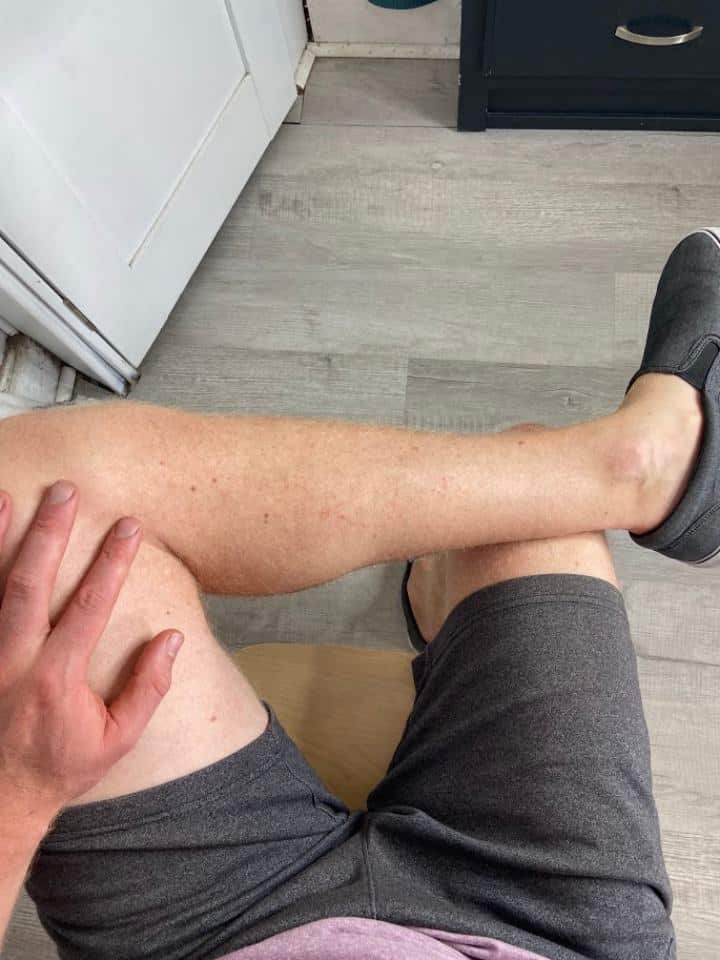
- Similar to the seated self-test, begin sitting in a chair with good posture.
- Cross the ankle of the painful side over the opposite knee.
- Allow the hip to move into external rotation until a stretch is felt.
- You can add a gentle pressure to the inside of the thigh, pressing down gently towards the floor.
- Hold anywhere from 30 seconds to 1 minute.
Activity Modifications for a Quick Recovery
While you’re experiencing pain and are having difficulty sitting with piriformis syndrome, you may need to make modifications to your daily activities and exercise routine to avoid exacerbating pain.
What to Avoid?
Prolonged Standing or Sitting
If you’ll be in a scenario where you’re doing a lot of walking, try to take brief sitting breaks.
On the other side of things, if you know you’ll be in a scenario of sitting for a while, try to take standing breaks, or apply the sitting recommendations listed above.
Inclines or Stairs
Any type of incline, upward in particular, can place the piriformis muscle into a more stretched position as you step up with the painful side.
In the process of pulling yourself up the incline with that leg, you could potentially strain the muscle. This is especially true if you have any other muscles imbalances present, such as weakened gluteal muscles.
Repetitive Motions
Now, don’t get the impression that you have to give up all of the activities you love doing forever… you just may need to temporarily put them on hold while recovering.
While light exercise, such as walking, should not harm you, the main thing is to listen to your body.
If you’re out for a walk, and your pain starts getting worse, stop and take a break. You’ll also want to cut your walk short once your pain reduces.
More intensive activities, such as running or biking, are best to avoid until your pain resolves. This is due to the higher impact of running and the pressure from sitting on the bike while performing that repetitive movement.
Physical Therapy to Help You Sit with Piriformis Syndrome
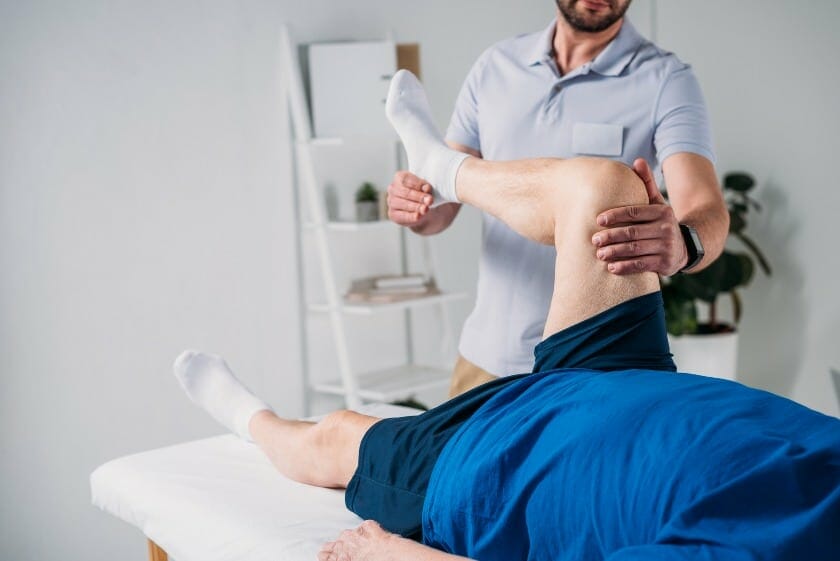
A referral to physical therapy is common to address piriformis pain. The following are common treatment options your physical therapist will perform.
Exercise will include a combination of stretches and strengthening exercises to provide pain. If your physical therapist has found any surrounding areas with muscle imbalances that may be contributing to the problem, they will include those in your exercise program.
Manual therapy, such as trigger point release, is a great way to help provide instant relief.
Your physical therapist may perform trigger point release manually or with the help of tools. This trigger point release is usually well-complimented with the use of modalities, such as heat, to help loosen the tight muscles and provide improved blood flow to the area.
As part of your home program, you may learn how to perform a self-trigger point release to the piriformis muscle. This is easy to do with a simple tool, such as a tennis ball.
Check out this video, which will demonstrate the best ways to perform a self-trigger point release using a tennis ball at home.
In addition to self-trigger point release with a tennis ball, foam rolling is a great compliment to give a more broad self-massage to loosen the tight area.
Foam rolling the piriformis muscles is very similar to foam rolling the glutes. The following video will demonstrate the best position to foam roll in to target the piriformis muscles.
Additional Treatment Considerations to Help You Sit with Piriformis Syndrome
While piriformis syndrome will typically respond well to the above recommendations, there is the chance that it may not respond as well as you had hoped it would.
There has been discussion and use of Botox injections to help relieve the muscle tightness, especially if a muscle spasm is involved.
Surgery to release the piriformis muscle would be an absolute last resort, and again, is very uncommon.
Recovery Time of Piriformis Syndrome
If your symptoms are more mild, it may take you anywhere from a few days to a couple of weeks to recover.
If your symptoms are more moderate, it may take a few weeks or a month to recover.
If your symptoms are more severe, it may take several weeks or a couple of months to recover.
If you are in a situation where surgical release of the piriformis muscle was required, recovery can take anywhere from several months or up to a year.
How soon you’ll be able to sit more easily with piriformis syndrome will depend on symptom severity and treatment route.
Final Tidbits
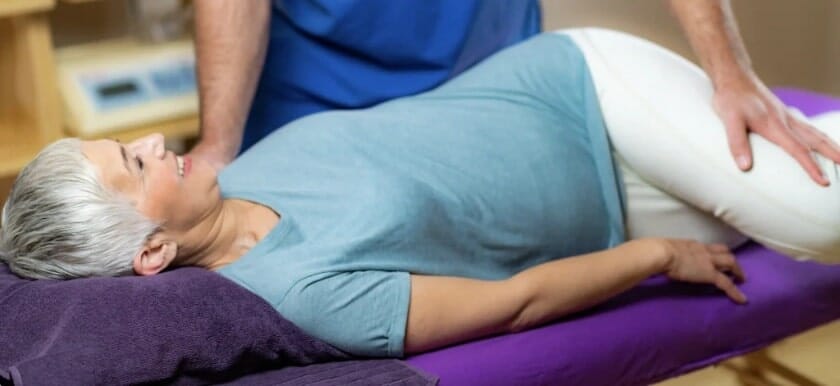
Let’s review some of the main highlights here for how you can sit with piriformis syndrome:
- Remember that piriformis syndrome is commonly caused by a tight piriformis muscle.
- Activity modifications and rest early on can help keep your pain from worsening and make sitting easier.
- Knowing how to sit with piriformis syndrome is important, as this is a common pain trigger.
- Incorporating the right exercise routine, including how to do an effective piriformis stretch, can help to relieve pain.
- If your pain is continuing with the above measures, make sure to consult with your medical doctor and physical therapist for a more in-depth assessment.
FAQ:
Can I use ice instead of heat on the piriformis?
Ice is another option to provide pain relief; however, you may notice with ice some stiffness once you start moving again. You aren’t harming the area if this occurs, but for this reason, most will tend to lean towards heat instead of ice for pain relief and to loosen the stiff muscles.
Is walking good for piriformis syndrome?
It’s important to keep yourself moving as much as you can tolerate with any injury; however, avoid prolonged walking and standing, as these will tend to increase pain.
When should I consult with a healthcare professional?
If your pain is continuing for more than 1-2 weeks, you should make an appointment with your doctor or physical therapist to further examine the area.











